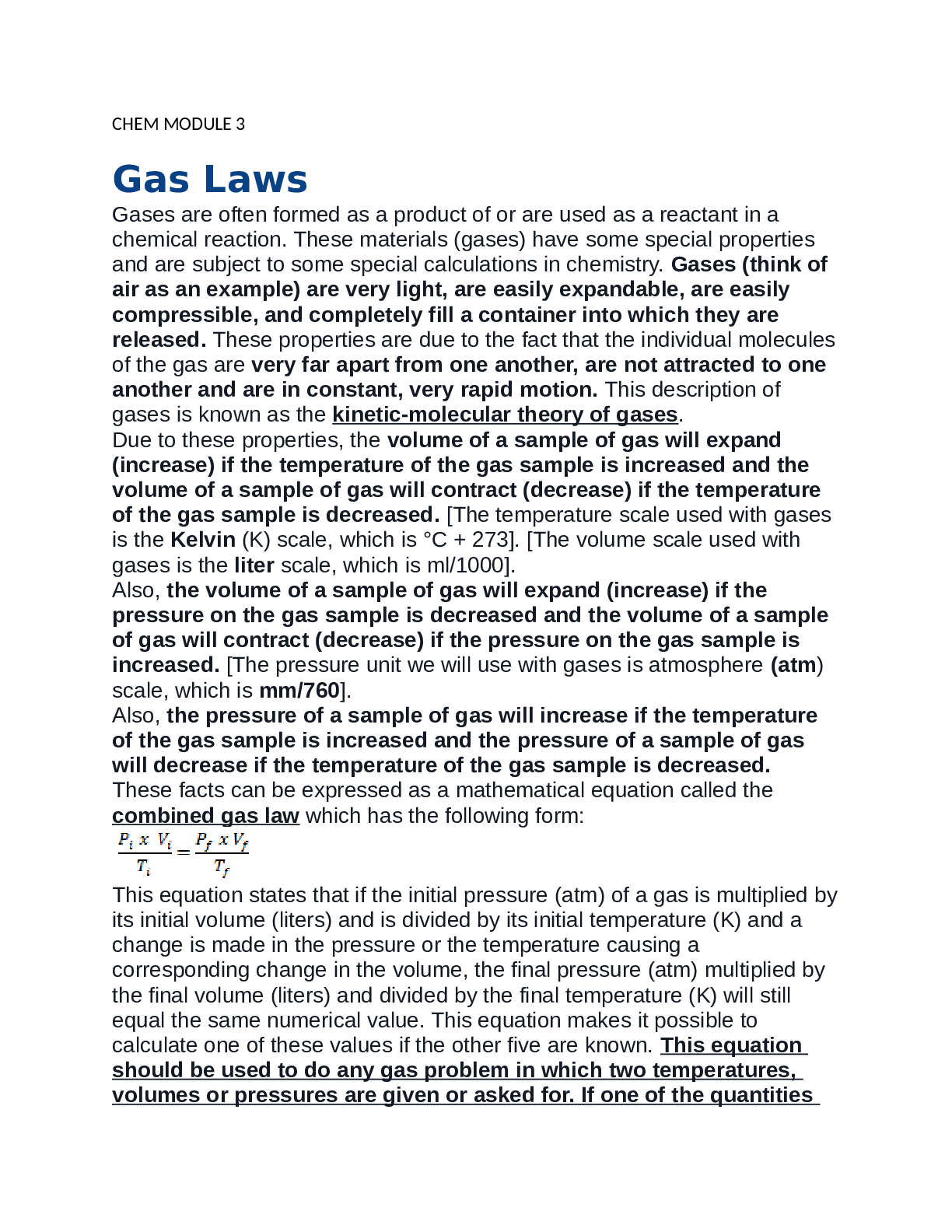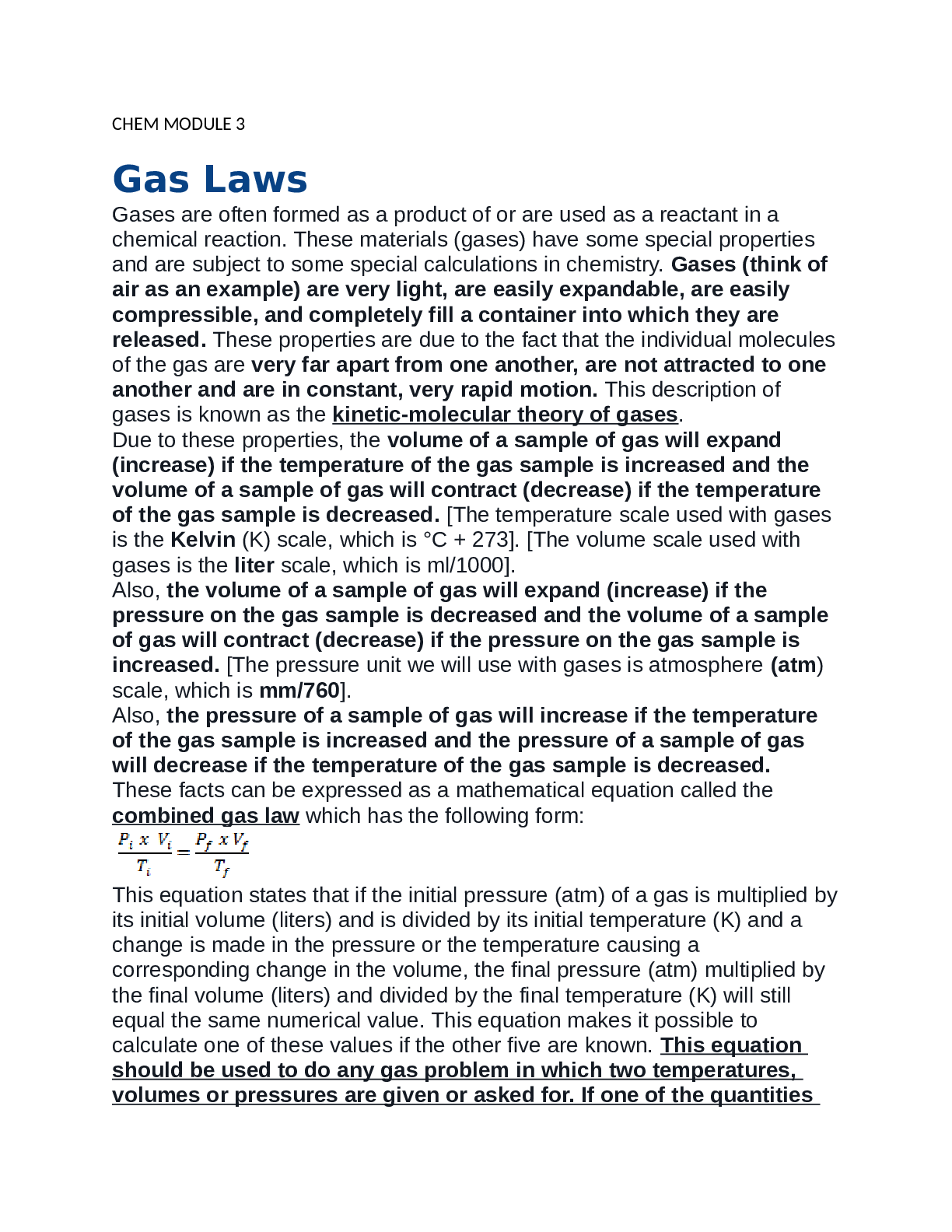CHEM MODULE 3 Gas Laws
Course
English
Subject
Chemistry
Category
Questions and Answers
Pages
39
Uploaded By
ATIPROS
Preview 5 out of 39 Pages


Download all 39 pages for $ 13.00
Reviews (0)
$13.00
